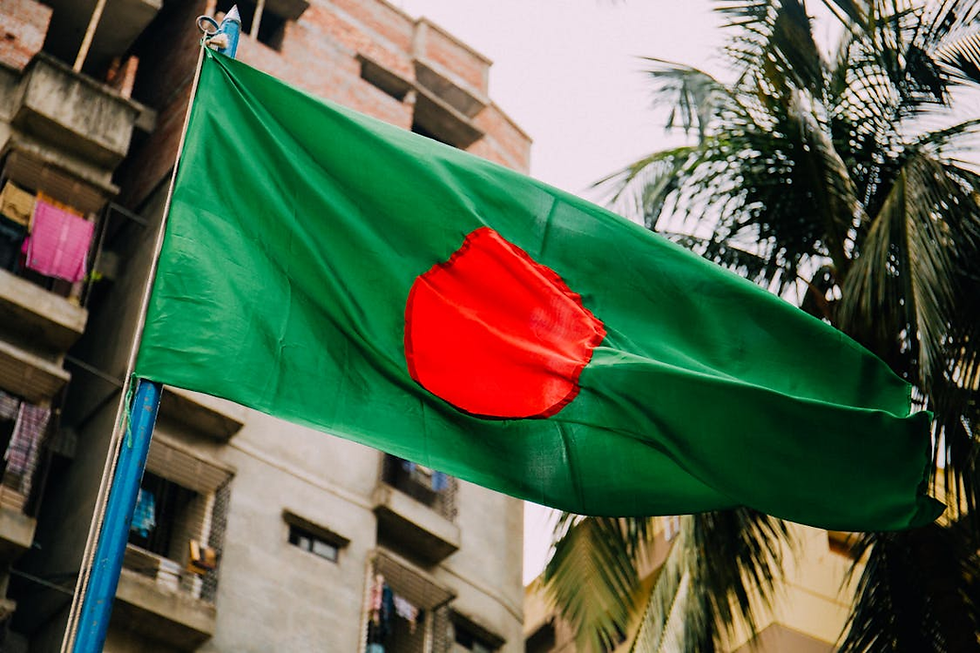Tensions at India-China Border Rise
- Arshiya Khanna
- Sep 1, 2020
- 3 min read
Updated: Dec 23, 2024
Arshiya Khanna writes about the ongoing conflict at the India-China border, and discusses why peace has been unattainable. Deaths have occurred on either side, and arguments surrounding land ownership seem unresolvable. This article explains the complex history of the two nations' relations, and identifies the risk of future disputes. China is reportedly building a missile site, while India is discouraging the use of Chinese technology.
On June 15th, Indian and Chinese forces faced an intense brawl in the Galwan valley. Border tensions have been simmering since May 2020, after India built a new road in the Galwan river valley, along the Line of Actual Control. Chinese forces objected to this construction. The setting up of a People's Liberation Army tent near the Galwan river triggered a violent tussle between Indian and Chinese soldiers. This "melee" fight resulted in the death of 20 Indian soldiers (including an officer), while 10 soldiers were taken captive by the Chinese. 43 casualties (including the death of an officer) were reported on the Chinese side. Attacks were carried out with the use of stones and spiked clubs.
This conflict is neither unprecedented nor is it an isolated event. It is a result of the absence of a clearly defined border between India and China. There is no publicly available map depicting the Indian version of the LAC, while the Chinese version consists of claims in the Ladakh region as well as the Indian North Eastern state of Arunachal Pradesh. Thus, there are several discrepancies on the demarcations of the Indo-Sino border, which has given root to a tumultuous history of border skirmishes.

The initial clashes began in May 2020 at the Pangong Tso beach: a lake (nestled between India and Chinese occupied Tibet) through which the LAC passes. In the same month, Chinese troops were reported to have entered the Galwan river valley, while objecting to a road construction within India’s (undisputed) territory. The most significant and violent clash occurred on 15th June, and lasted for about 6 hours. The exact reason for the clash is currently unknown, with both sides giving statements inconsistent with the other. On 16 June, Chinese spokesperson for the PLA Western Command Colonel Zhang Shuili, claimed that India had violated bilateral protocol by using violent physical force to subdue Chinese troops. He further remarked, in a rather controversial statement, that China held complete sovereignty over the Galwan Valley. The Indian side retaliated by stating that China had “unilaterally tried to change the status quo” and claimed that the attack was “planned and premeditated”. According to Indian analysts, China is believed to have captured 60 square kilometres of Indian territory between May and June 2020.
Since the attack, there have been several diplomatic and military-level talks in order to defuse the situation. Both sides agreed to de-escalate and retreat from the clash point. Indian and Chinese troops retreated around 1.5-2 kilometres, creating a buffer zone. Despite such measures, the disengagement process on ground has proven to be somewhat tricky. Recent satellite images show construction of a missile site by China at Kailash Mansarovar in Tibet. As of August 31st, fresh clashes were once again reported between Indian and Chinese troops on the southern bank of Pangong Tso. According to Indian officials, Chinese troops “carried out provocative military movements” to change the status quo yet again. "A Brigade Commander-level flag meeting is in progress at Chushul to resolve the issue."
Several reasons have been attributed to the bubbling acrimony between two of the most populated nations in the world. MIT professor, Taylor Fravel, said the skirmishes were a response from China to the development of Indian infrastructure in Ladakh, particularly along the Darbuk-Shyok-DBO road. From the Chinese perspective, India’s road building is seen as a threat to “territorial integrity”, and amounts to “back-stabbing” China. Additionally, these tensions have also been linked to China’s discontent with India’s decision to abrogate Article 370, which resulted in the modified status of Jammu and Kashmir. There have also been claims that India’s growing relations with the US, and its proactiveness in US plans that target China, have irked the Chinese.
Relations between India and China arguably haven’t been this poor since 1967. As fresh brawls erupt amid attempts to arrive at peaceful consensus, India continues to discourage the use of Chinese goods, and has banned a total of 59 Chinese apps from the country.

_edited.png)



Comments